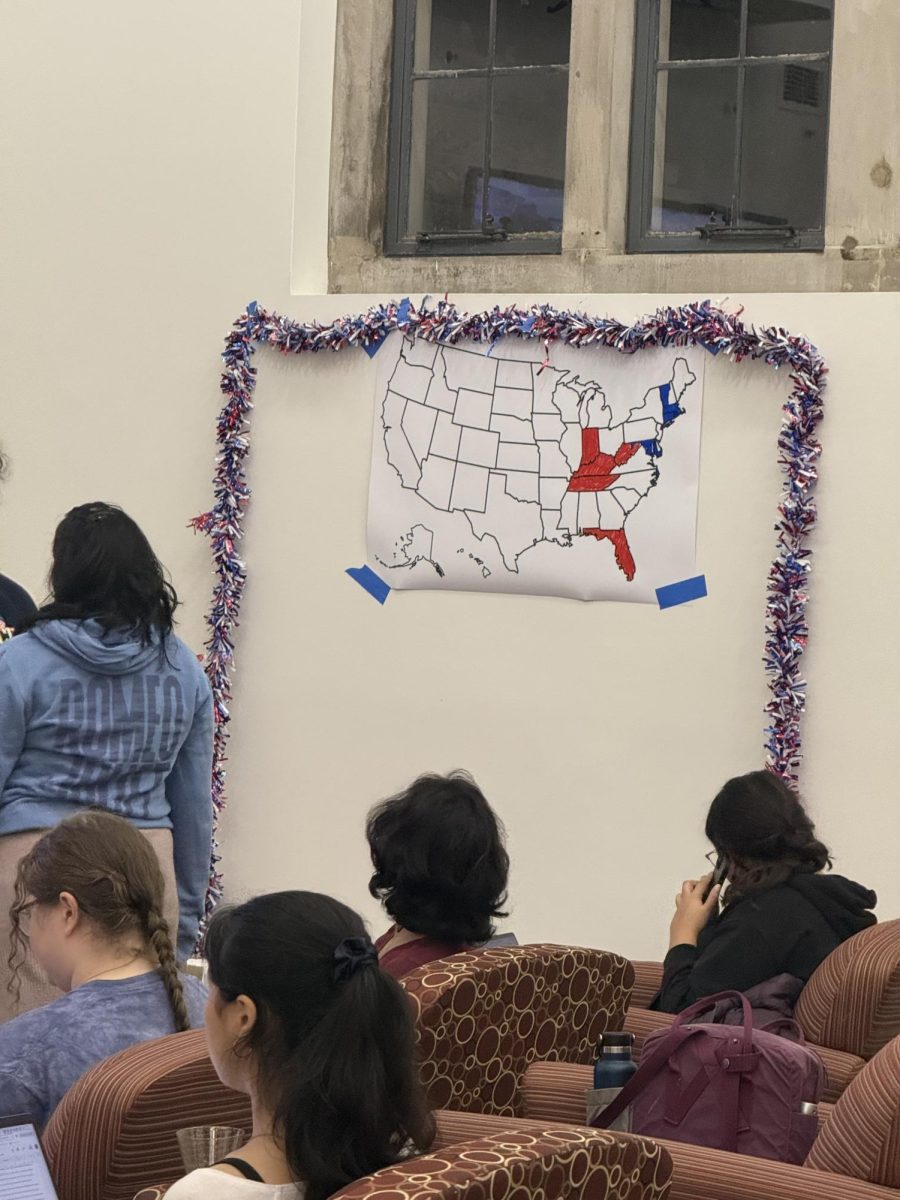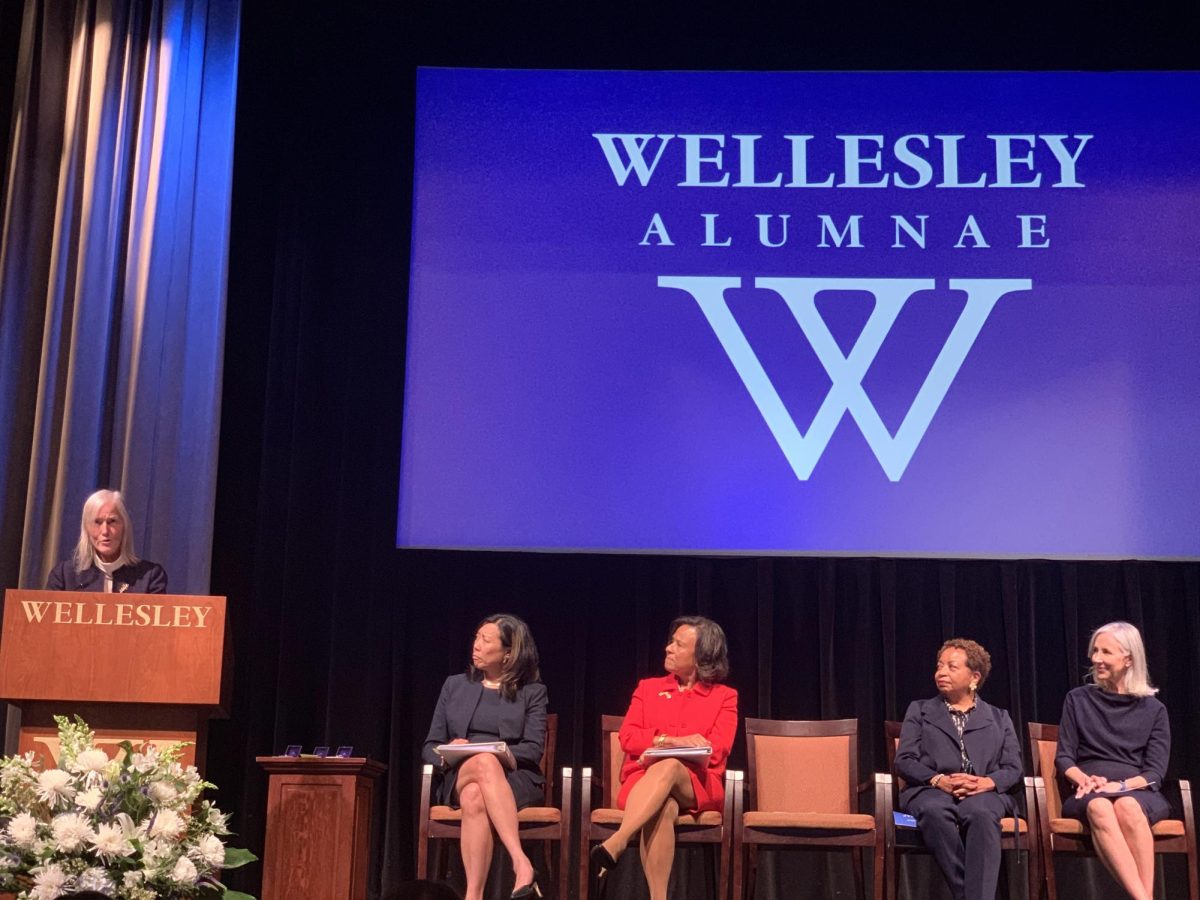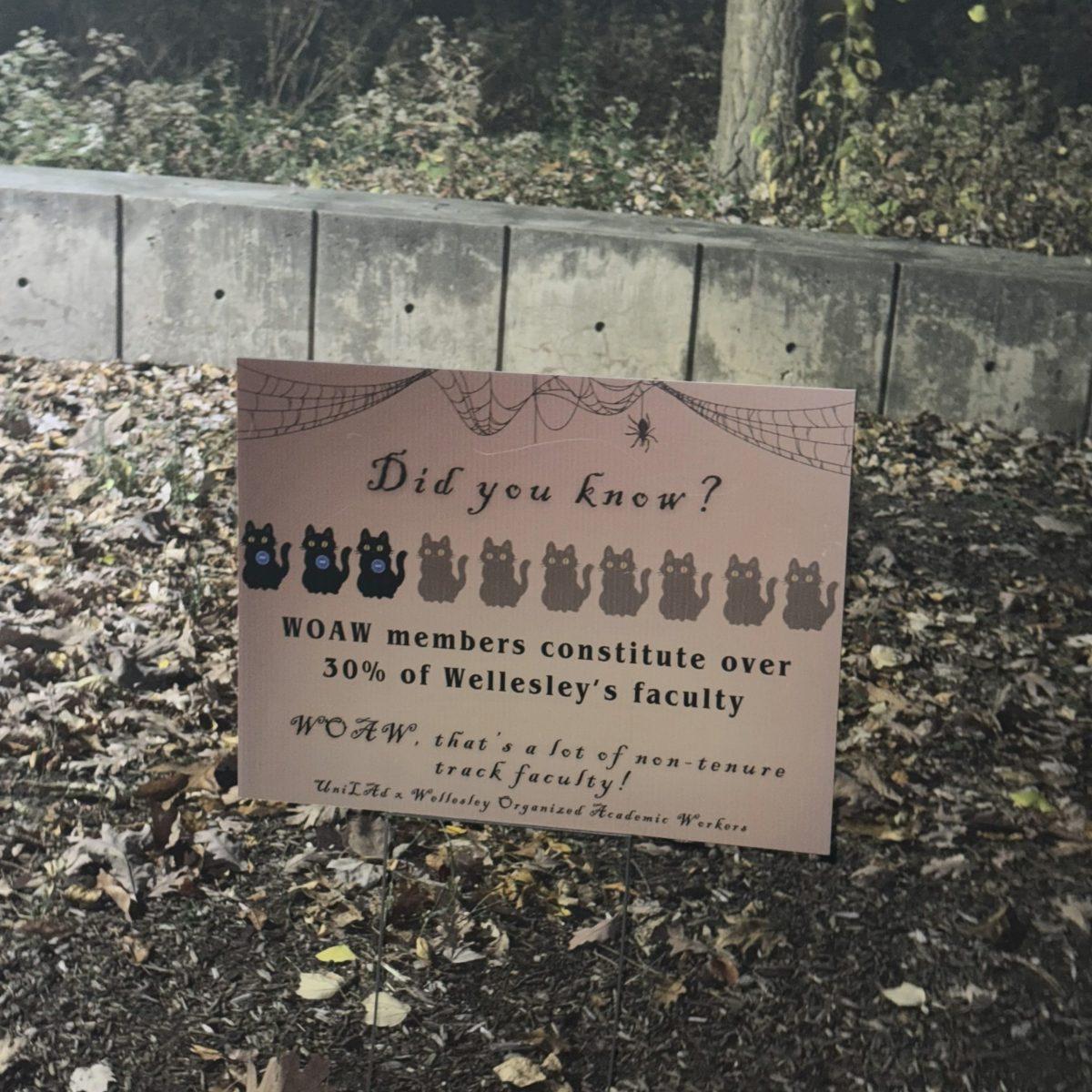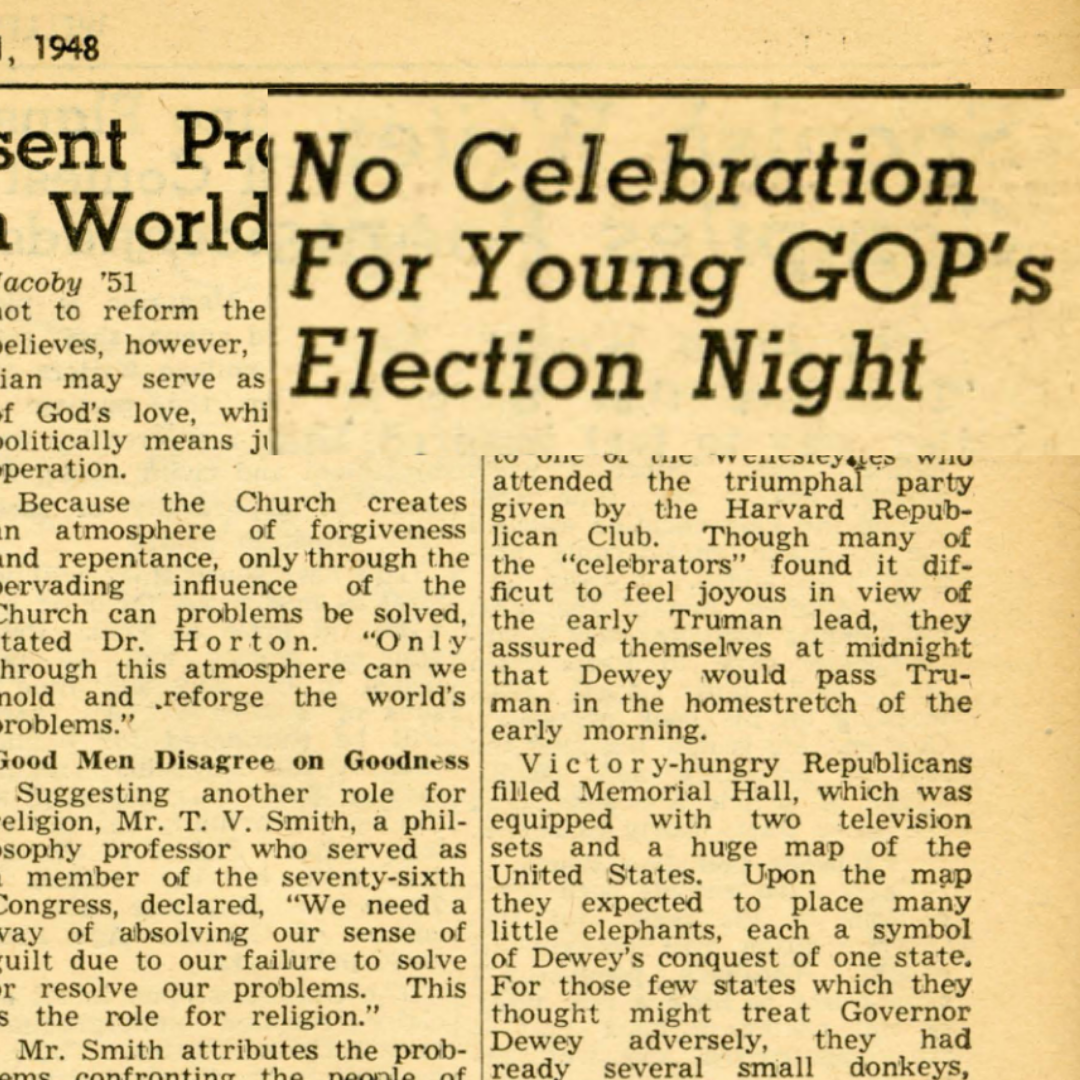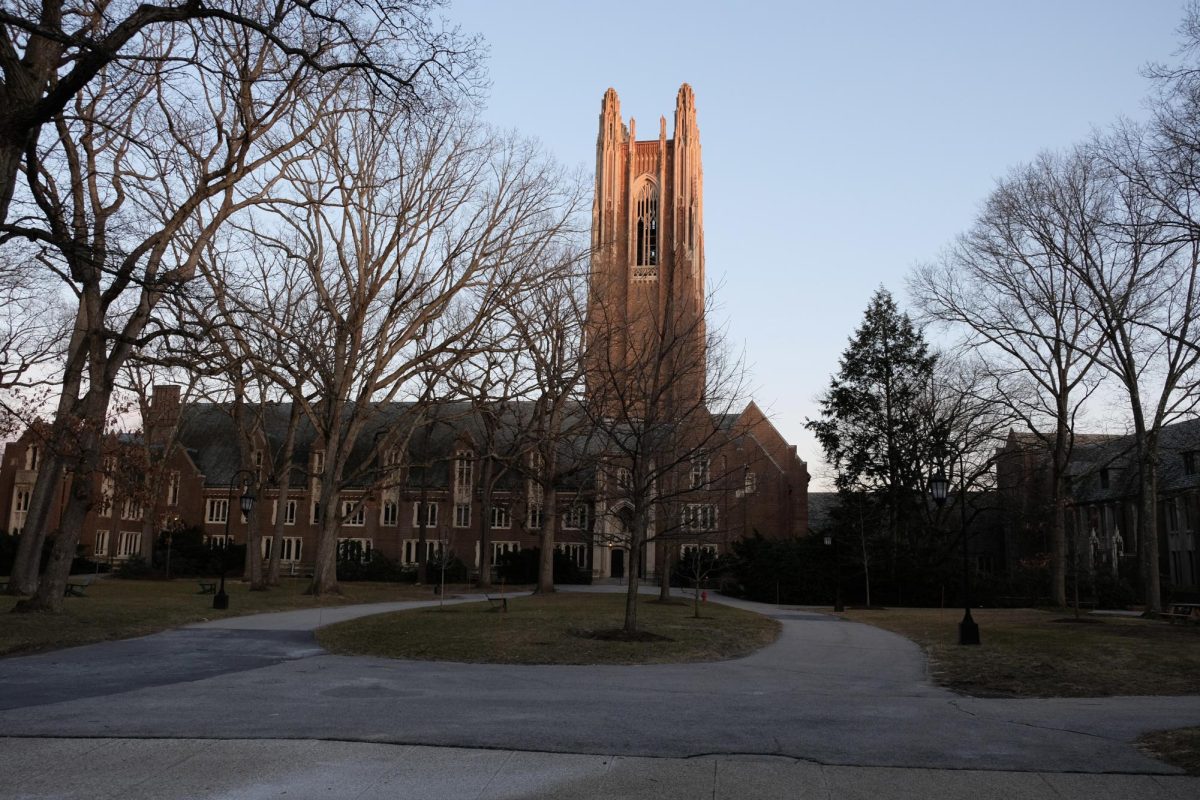By GRACE BENNETT-PIERRE ’16
Contributing Writer

Yu Zhou ’16
Staff Photographer
Last month, an article published in the New York Times Magazine raised again the issue of gender parity in science, technology, engineering and math fields. Commonly referred to as STEM fields, subjects such as physics, biological sciences and computer science are typically dominated by men at the undergraduate, graduate and postgraduate levels, a trend that is even more troubling given that the majority of undergraduates today are women.
Although STEM fields have traditionally been less popular than social science fields at Wellesley, in recent years the number of STEM majors has drawn closer to the number of social science majors.
As reported in the most recent Wellesley College Factbook, the percentage of Wellesley students majoring in STEM departments in 2012 was 34.7 percent, up from 24.6 percent in 2003. Social science majors, on the other hand, made up 44.4 percent of declared majors in 2012, a decrease from 52 percent in 2003.
The College’s website states that STEM majors offered at Wellesley include astronomy, astrophysics, biological chemistry, biological sciences, chemistry, cognitive and linguistic sciences, computer science, environmental studies, geosciences, mathematics, neuroscience and physics. Likewise, social science majors include economics, political science, sociology, philosophy, anthropology, history and psychology.
According to the Science and Engineering Indicators published by the National Science Foundation (NSF) in 2012, although women earn 57 percent of all bachelor’s degrees in the United States, they earn only 50 percent of bachelor’s degrees awarded in STEM fields.
Another NSF report, published in February of 2013, shows the percentage of bachelor’s degrees awarded to women increasing to parity over time and then stabilizing for some subjects, such as biological sciences, but decreasing for others, like computer science. In 2003, 59.7 percent of bachelor’s degrees in biological sciences were awarded to women, and a similar percentage, 57.8 percent, were awarded in 2012. In contrast, 27 percent of bachelor’s degrees in computer science were awarded to women in 2003, compared to only 18.2 percent awarded to women in 2012.
Forbes ranked Westminster College as “The Best College for Women in STEM” for its high number of female STEM majors. Thirty six percent, 11.5 percent more than Wellesley, of the 2008 graduating class at Westminster college majored in STEM fields, with women making up the majority of those students.
Though the NSF lists psychology as a STEM major, Wellesley does not. If psychology were counted as a STEM major rather than as a social science major, the percentage of Wellesley students who majored in STEM departments in 2012 would increase from 34.7 percent to 43.2 percent, while the percentage majoring in social science departments would decrease from 44.4 percent to 35.9 percent.
The science departments appear to make a concerted effort to foster student interest at Wellesley in science, technology and mathematics.
Physics and classical civilization major Hannah Herde ’14 credits the department’s support for her interest in studying and eventually majoring in the subject.
“Physics was very encouraging at academic fair during orientation,” she said. “I was going to take some time off [from physics], and the physics department convinced me not to.”
To increase interest in the subject, the physics department also introduced “tea-time” in the fall of 2012 to all physics lab sections so that students can take a break in the middle of lab to drink tea, eat cookies and discuss current events in physics.
Herde believes that the tea program encourages Wellesley students to continue studying physics.
“If you can meet people who are interested and excited and doing what you’re thinking about doing, it makes it a lot easier to visualize yourself there,” Herde said. “Part of it is to have people to stand up and say, ‘Yes, physics is hard, but that doesn’t mean you can’t do it.’”
Herde’s statement echoes that of Ann Trenk, a professor in the mathematics department, who agrees that being exposed to female role models is an important part of making women feel comfortable pursuing careers in STEM fields.
“When you do find math hard and you’re a woman, you have to fight the feeling that might come to you that says, ‘Oh, I knew I couldn’t really do this because I never really envisioned myself as a mathematician,’” Trenk said.
Chemistry professor Mala Radhakrishnan agrees that simply feeling outnumbered may be another barrier for women pursuing undergraduate and graduate degrees in STEM subjects.
“There really is still a big imbalance…in grad school there were only a few females in our lab,” Radhakrishnan said. “I think just being outnumbered feels like there is a old boy’s network.”
Trenk states that, even as a professional in the field, it is noticeable when there are only a few women in the room at academic conferences.
“I think there’s some sort of critical percentage where you feel like you’re part of the mainstream,” Trenk said. “It clearly doesn’t have to be 50-50 percent, but you have to notice that there’s not just one or two of you.”
Although gender imbalance may not be a concern in Wellesley classrooms, incoming students may have already encountered the gender gap in sciences.
“Certain classes…were very dominated by male students,” said Sahitya Raja ’15, a biological sciences major, of her high school. “It created a kind of hostile environment where you could noticeably see girls weren’t sharing their opinion as much…in physics especially. My physics class was 20 students and 18 of them were guys.”
Once at Wellesley, experiences outside of an all-female academic environment may cause students to realize that women may not commonly pursue STEM fields.
“I’ve had a couple of my students go out into the ‘real world’ and do summer internships and that’s when they realize that they are really in the minority,” Radhakrishnan said.
Though fewer women than men pursue undergraduate degrees in STEM subjects, both Radhakrishnan and Trenk acknowledge that an all-women’s college helps foster interest in science and math fields by removing gender stereotypes from the classroom.
A greater number of women faculty in the sciences provides Wellesley students with a greater number of role models.
“There are more women faculty at Wellesley in STEM fields than there were when I was in college,” Trenk said. “When I was in college there were zero women professors in the math department.”
Although majoring in a STEM department may seem to be a way to pursue a lucrative career, both Herde and Raja both stress the passion they have for their majors.
Raja explained, “There’s no guarantee of being well-paid in being a STEM major, but there is a bit more security in having a job. It’s a bonus, but not my motivation.”

